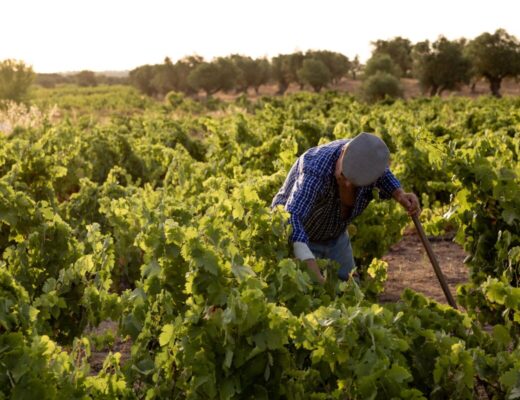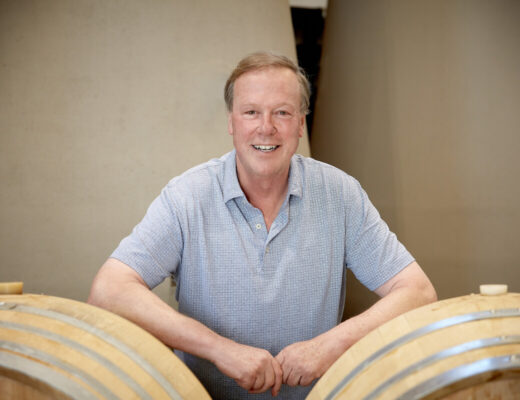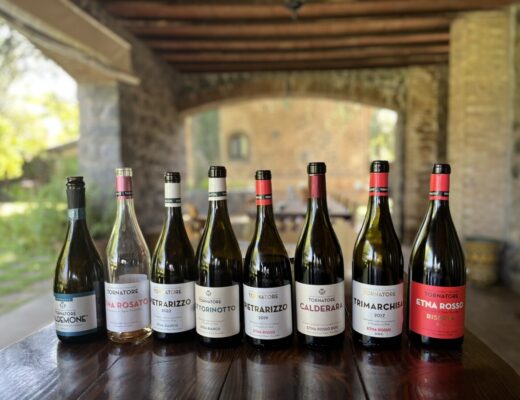It was in the year 1858 when Camilo Hurtado de Amézaga, marquis of Riscal, traveled to Bordeaux, France and found the inspiration to start his own winery. He would bring French vitis-vinifera vine cuttings to plant in his vineyards – cabernet sauvignon would be the variety that best adapted to the Rioja terroir – which played a key role in many of his early wines.
Bodega de los Herederos del Marques de Riscal, as it is officially named, is located in the village of Elciego, within the Rioja Alavesa sub-area. It owns 540 hectares of vineyards and controls another 900 to produce more than six million bottles per year, becoming one of the easiest Spanish brands to find abroad – over 60 percent of its production is exported to more than 100 countries.
Read Also: Port authority – a centuries old tradition
Set on maintaining and reinforcing its position as one of the most important and well-known wineries in Rioja, the Riscal brand embarked on the 21st century with the intent on creating a ‘City of Wine’ on its property – easily the most audacious, intense and effective marketing campaign ever displayed by a Spanish winery.
They were certain that they wanted a modernistic building that aroused emotions. To achieve that, they thought of Frank O. Gehry, a Canadian-born, world renowned architect, known for works such as the Guggenheim Museum in Bilbao. Gehry had never designed a winery before and accepted the challenge.
Like the Guggenheim, the building is covered with titanium. In this case, however, Gehry wanted to infuse his work with the signature colours of Marques de Riscal: pink like the wine, gold like the mesh on the Riscal bottles, and silver like the bottle top.
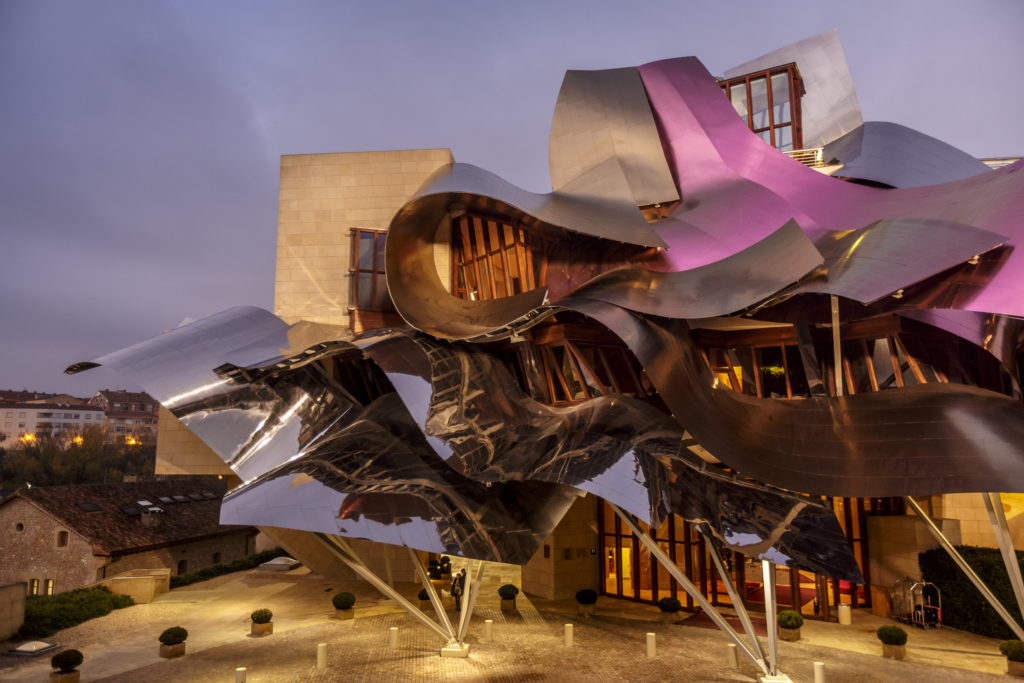
A closer look: The Marques de Riscal Hotel is covered with titanium in the signature colours of Marques de Riscal.
Gehry’s style is considered deconstructivist, a movement in postmodern architecture where elements of the design appear to be fragmented; they are often described as chaotic or disjointed. The primary use of corrugated metals gives off the impression that it is unfinished in appearance.
The City of Wine (the name is patented) includes the five star Marques de Riscal Hotel, operated by the Marriott chain; two restaurants overseen by Riojan chef Francis Paniego, who received his first of several Michelin stars in 2004; a wine therapy spa managed by Caudalie, the leading firm in the field and the ancestral winery. It is one of the most visited wineries in the world.
Wine lovers with a passion for history, prefer to dream of the winery’s historical cellar, named the “Botellería Histórica” aka “The Cathedral”, which stores bottles from every vintage since the first harvest in 1862.
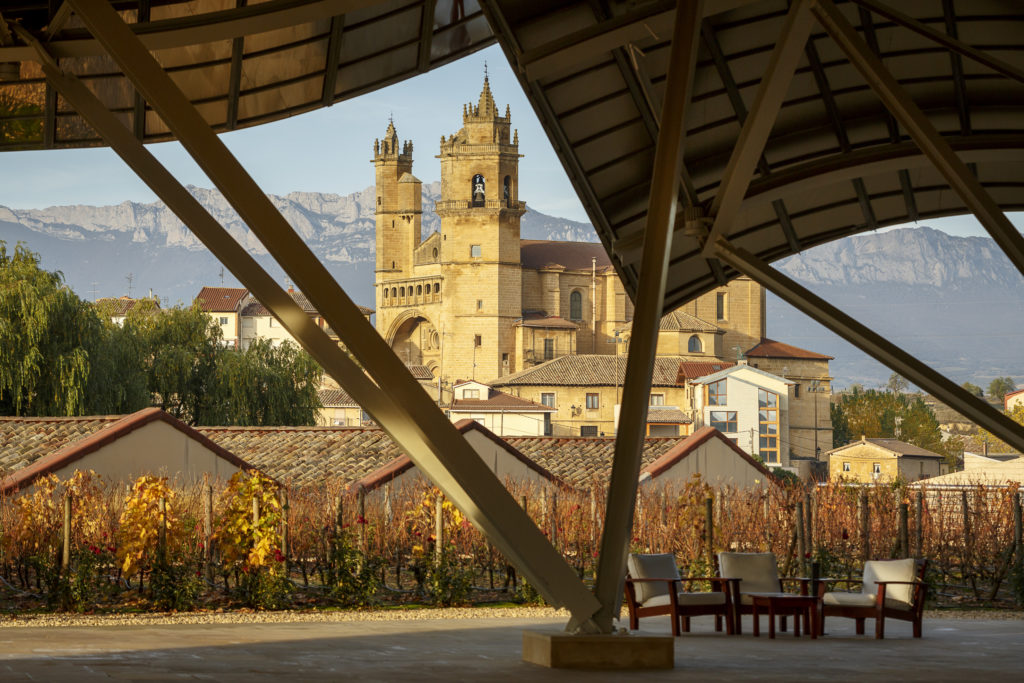
Spectacular views from the ‘City of Wine’.
In addition to its world famous reds, Riscal pioneered the production of modern white wines in Rueda through its company Vinos de los Herederos del Marques de Riscal and owns a third winery in Zamora, near the border with Portugal, where it produces Riscal 1860 Roble and an old vine rosé in the VT Castilla y León category. These wines are made 100 percent organically – officially certified in 2018.
As Spain’s oldest winery with layers upon layers of history and intrigue, the City of Wine is a rewarding visit experience. The extraordinary longevity of its wines coupled with its continuing focus on innovation, sustainability and modernity make Marqués de Riscal one of the world’s most foremost wineries in operation today.

Marques de Riscal 2015 Rioja Reserva
Made mainly from tempranillo vines planted before the 1970s and grown in the best clay-limestone soils of the Rioja Alavesa, this is the flagship wine of Marqués de Riscal. Vintage after vintage, this is the reference point for what Rioja reserva must be. There’s good balance of acidity and fine tannin. Pepper notes and plenty of spice dance on the palate and linger throughout the lengthy finish. The Graciano and Mazuelo varieties, whose presence in the blend does not exceed 10 percent, provide crispness and an energy to the wine. It’s fresh, fine, elegant and very suitable for laying down for many years, but why wait? This is ready to enjoy now. ($24.75)

Marques de Riscal 2019 Rueda Verdejo
Made 100 percent organically, this crowd-pleaser is fresh, crisp and wonderfully fragrant. Right away there’s aromas of tropical fruit – including grapefruit, pear and peach – along with fresh grass, honey and some mild pepper. It is quite lively and refreshing with persistent length. Pair this with appetizers before dinner or a wide selection of seafood, including peel and eat shrimp. ($13)
![]()





